Do you know how fast your internet speed is right now? If the answer is no, there’s a simple way to change that in the next 5 minutes. A quick internet speed test will tell you exactly how fast your connection is and how it compares to your internet service provider’s advertised speeds.
But there are many speed tests out there that can do this simple job, so which one should you trust?
What’s the best internet speed test overall?
Using a good speed test, such as Ookla’s, CNET’s pick for the best speed test overall, will help you determine what speeds you’re getting at your address. You might be surprised to find they’re lower than the advertised speeds from your provider.
To help you decide which test is best for you, we evaluated multiple speed tests based on speed, consistency, accessibility and browser compatibility. Check out our top picks.
Best internet speed tests for 2024
One of our favorites is the Ookla speed test, which has a strong reputation for consistency and is one of the first speed tests on the web. We like Ookla for having everything you need from a speed test: accuracy, the ability to view your speed test history (when you create an account), a wide array of servers to connect to, and even a handy app for speed testing from your Android or iOS device. Ookla’s speed test is also the one we use when we’re testing Wi-Fi routers.
Ookla’s done a good job keeping up with the times by adding new features and capabilities. The service released a video-specific speed test that measures your network’s ability to handle 4K video streams, and it also offers its own VPN service. In addition to the website and the smartphone apps, Ookla also has apps you can run on Windows or Mac. You can even run the Ookla speed test on an Apple TV.
One minor downside: Ookla does display banner ads while you run basic speed tests. It’s not a huge deal, though it might slightly impact your results, depending on the strength of your connection at the time of the test.
Fast.com is another great broadband test, and the interface is as simple as possible. Plus, one of its biggest advantages is that Netflix owns it. That makes it a great pick for online streamers because the test is structured to see if your connection is strong enough to stream Netflix in maximum resolution without buffering.
While Fast.com is a great tool for some, it won’t be the most helpful test for all users. The basic interface is easy to use but lacks some advanced settings and metrics you’ll find with other speed tests. Most notably, you can’t specify which server you’d like to connect with for your test.
All of these speed tests are simple to use, but the M-Lab Internet Speed Test is probably the easiest. Short for Measurement Lab, the open-source M-Lab test was developed by a collection of computer scientists and academic researchers with Google’s backing — and it’s the test that pops up whenever you type “internet speed test” into the Google search bar. After agreeing to the data policy, click the “Begin” button to see your download speed, upload speed and latency within seconds.
That’s about as simple as it gets because you won’t need to bookmark it or remember exactly what it’s called. There are no ads while you run the test; the only data shared with M-Lab is your IP address. Just know that the M-Lab test doesn’t let you pick which server you’ll use during the test, and it’s designed for internet speeds of only up to 700 Mbps. You’ll need to turn elsewhere if you’re trying to speed-test a gigabit connection.
If you’re looking for a test that looks at speed and consistency, Speedof.me is the way to go. Like Ookla, the test interface shows fluctuations in your upload and download speeds. Over time, that can make it easier to spot when something is amiss with your connection, especially since Speedof.me lets you compare your results with previous tests. Its mobile-friendly website is also great for running tests on your phone, allowing you to do a quick speed test on the go without downloading an app.
Speedof.me isn’t a perfect option, though. For starters, there’s no option for manually selecting which server you connect with. And if home networking isn’t your forte, the visualized data might seem more confusing or overwhelming than something like Fast.com, which gives you a number.
Testmy.net is an internet speed test that runs entirely on HTML5 and PHP. That means it doesn’t require third-party software like Java or Flash to run your test, which can produce more accurate results. That also makes it a useful tool for comparing performance between different browsers. You can also create an account to track your internet speed for future reference or comparison.
It’s not the most user-friendly tool, however. With a good deal of in-depth data, you’ll have a lot of information to look through that might not be relevant to you. The design is also a little ugly by speed test standards, and it takes a few clicks before you begin a test, which isn’t as streamlined as other speed tests that feature big “Go” buttons as soon as you load the page.
Tips for taking an internet speed test
Running a speed test is usually as simple as finding the test and clicking the start prompt, but there are some extra measures you can take to get more accurate and informative results. Here are a few tips to consider when taking an internet speed test.
- Test using both Ethernet and Wi-Fi connections. Testing over an Ethernet connection will give you a better look at the actual speeds you’re getting from your provider. Often, you can run such tests straight through your router via the router’s accompanying app. Follow the Ethernet test with a test over Wi-Fi for an idea of the speed difference via Wi-Fi versus wired connection.
- Test at varying distances from your router. Distance from the router can affect your Wi-Fi speeds. Try running a few speed tests at varying distances from the router and perhaps other rooms or floors of your home to gauge your router’s range and identify any dead zones.
- Test using different devices. Run a speed test on your computer, phone, smart TV, gaming console, etc. If speeds drastically differ between devices, you may need to adjust device or router settings to improve performance across all devices.
- Test at different times of the day. Depending on your internet connection type, peak usage times (typically weeknight evenings when many stream their entertainment) can hinder your speeds. Try running a few speed tests throughout the day for an idea of when your connection is at its peak performance. Keep those times in mind — they are ideal for scheduling downloads of large files such as video games or movies.
What are the different test types?
There are many types of speed tests that can help you better understand your internet speed.
- Download and upload speed tests refer to how quickly you can receive and send data to the internet. Actions such as surfing the web or streaming videos fall under downloading speed, while sending emails or uploading photos and videos online fall under upload speed.
- A ping or latency speed test shows how long it takes for your device to receive a response after sending a signal to the server. Think of it this way: when a button on a video game controller is pressed, an action is triggered on the screen. A ping test measures the time between the command and the outcome, so a higher latency speed means a slower reaction time.
- Jitter speed tests describe how the data flows between all the network devices. Data is transmitted between devices at a set interval, but the connection can turn laggy as a network becomes more congested — this is jitter.
- Streaming speed tests check if your internet connection is strong enough to stream in maximum resolution with little to no buffering. Since streaming videos requires more bandwidth, the download speed must be high enough to support the action.
How CNET chose these internet speed tests
For over 20 years, we have used respectable sources, expert opinions and a hands-on approach to review data. We strive to personally test products and services to give insight to readers and offer them multiple options for what they’re looking for. Our team has approved these internet speed tests through several factors, including speed, consistency, accessibility and browser compatibility. In fact, Ookla’s speed test is the one we use when we’re testing Wi-Fi routers, so we know from firsthand experience that it’s reliable.
Internet speed test FAQs
What’s a good internet speed?
The Federal Communications Commission defines broadband speeds as having downloads of at least 100 megabits per second and uploads of at least 20Mbps.
Internet plans with multi-gig speeds as high as 2, 3, 5, 10 or even 50 gigabits per second (that’s 50,000Mbps) are starting to emerge from many providers, including AT&T, Comcast, Frontier, Verizon Fios, Ziply Fiber and others. But plans like those are overkill for most homes, at least for now. The ideal is a symmetrical internet connection with uploads that are just as fast as the downloads — speeds of 100Mbps would be perfectly fine for most homes.
Why are my internet speeds so slow?
There are a few things possibly affecting your speeds, but using a Wi-Fi connection is the most likely cause of tested speeds lower than the speeds your ISP runs to the home.
Wi-Fi will almost always be slower than an Ethernet connection. Moving away from your router can further hinder your speeds. If there are walls or other obstructions between your router and the device you’re using, this could cause your internet speed to fall.
In other instances, your internet speed can fluctuate depending on peak usage hours. Possibly worst of all, if your internet provider enforces data caps or throttles connections to help maintain overall network performance, you’ll experience noticeable hits to your internet speed.
Keep this in mind when running a speed test and take measures to mitigate potential speed disruptions. For example, moving closer to the router can help get more accurate results. But for the best result, try testing over an Ethernet connection, if possible. Also, consider running a few speed tests throughout the day to know how your speeds fluctuate at different times.
Fast.com vs. Speedtest.net: Which is better?
While both internet speed tests are good options to determine your connection’s strength, each has pros and cons. Since Fast.com is owned and operated by Netflix, it’s a great test for online streamers relying on decent bandwidth. However, it’s not as in-depth as Speedtest.net for providing analytics and doesn’t let users specify which server they’d like to connect with. Speedtest.net, on the other hand, has a strong reputation for consistency, but it has banner ads that may slightly affect its test results.
Can speed tests help improve my internet speeds?
Speed tests won’t do anything to change the speed of your home’s Wi-Fi network, but they’re a great diagnostic tool — a quick way to check how your network is performing in various spots around your home.
The best way to put speed tests to use is to run them on your phone or laptop in various rooms throughout your house. If you find a dead zone where speeds come crashing down, you might want to consider putting a range extender in the closest room to that dead zone where speeds are strong — from there, it’ll rebroadcast your Wi-Fi signal and potentially speed things up. If you find multiple dead zones in places where you’d like to connect, it might be time to upgrade your router. For the best whole-home Wi-Fi coverage, consider going with a mesh router that uses multiple devices.










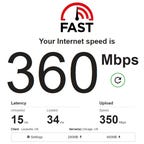
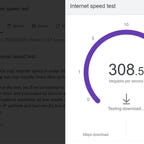
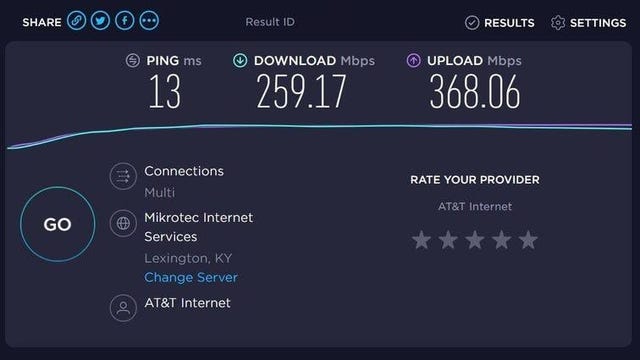
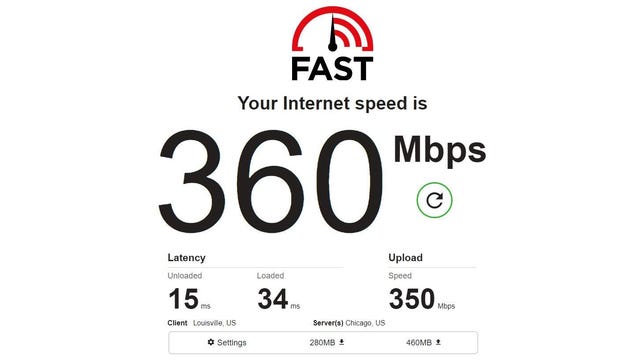
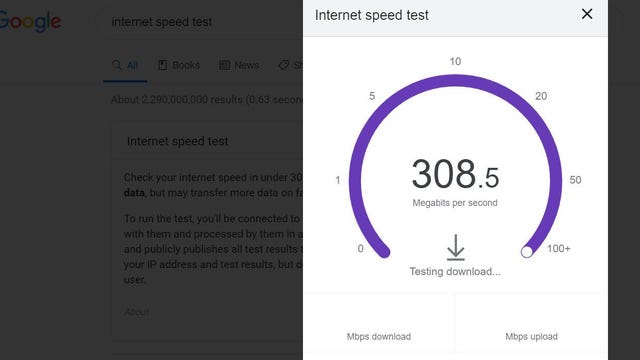
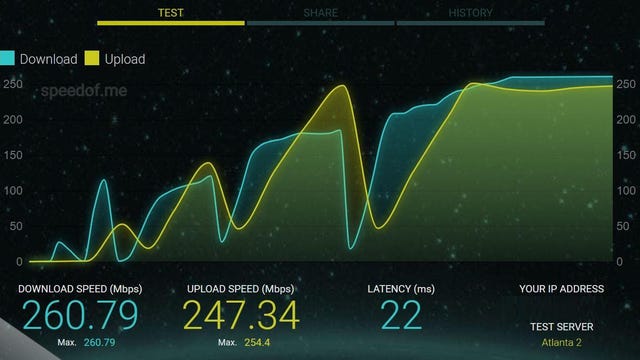
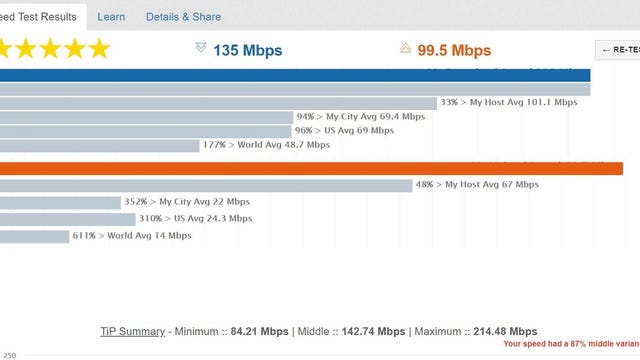








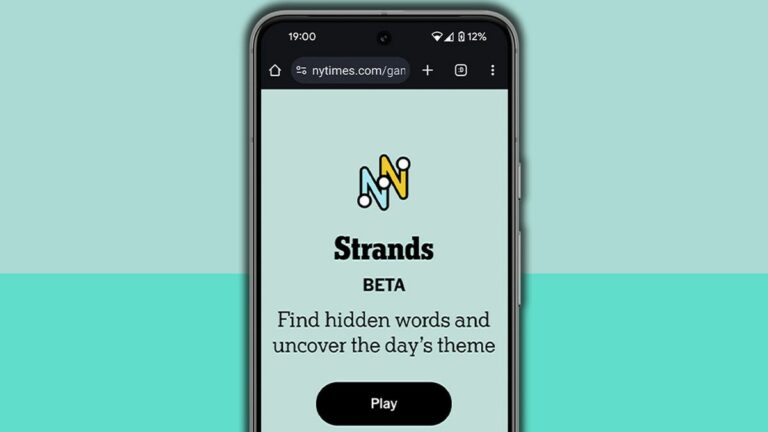

+ There are no comments
Add yours